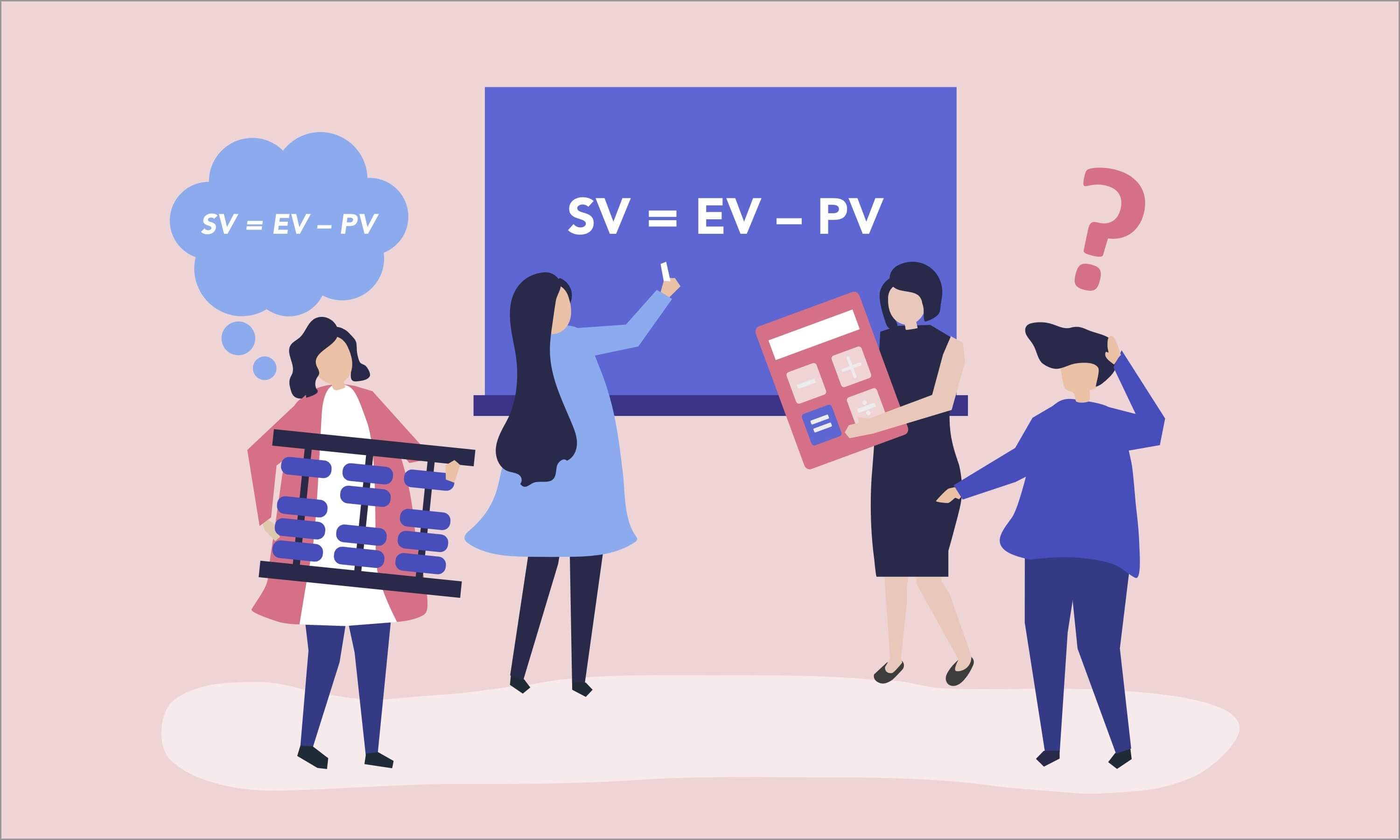Key Earned Value Formulas that Help to Track Project Performance

Project managers can spend countless hours trying to define whether the value of their projects is equal to the amount of money they are spending to complete it.
This task may seem difficult for both project managers without experience and even for the most experienced experts. The Earned Value Management with its practices and powerful formulas is aimed to assist to figure it out beyond the shadow of a doubt.
What is the power of Earned Value formulas? How to apply and differentiate them? Spend 7-8 minutes to dive into the subject, but first read about the Earned Value Management fundamentals.
Earned Value Management introduction
Ideally, project managers and their teams should always stay within budget and schedule. Earned Value Management is all about it. It provides the secrets to doing this well. Therefore, this kind of management measures projects performance against the project baseline.
The key goal of Earned Value Management is to ensure that the project finishes within the schedule and budget, which are determined during the project planning stage.
What is the Earned Value Formula?
The project management world consists of many powerful formulas and calculations that make the life of project teams easier and more efficient. These formulas will lead you to successful outcomes only in case you know when, how and where to implement them. Have you applied any earned value calculator?

Here we briefly describe the set of popular earned value formulas. Some of them are inputs obtained from project data, and some are outputs calculated by the project manager and give different indications of project status.
EV (Earned Value)
You have probably heard the term Budgeted Cost of Work Performed (BCWP) as well. It is equal to the Earned Value term (EV). These terms refer to the cost of the work, which has been completed as the value of the performance budget assigned to that work.
It is not only about the cost of completing some work. It reflects the value that has been earned by completing the work.
How to calculate EV?
The budget at completion multiplied by the percent of work completed:
EV = BAC x % complete
PV (Planned Value)
Planned Value is about the approved budget for work that is scheduled to be finished by a certain future date. You may also find the reference to PV as Budgeted Cost of Work Scheduled (BCWS).
As the EV formula considers how much you spent to get work done by a certain time, then Planned Value is more proactive. It demonstrates how much you should have spent to get to a specified date.
How to calculate PV?
In order to get the Planned Value parameter at the specific stage of your project, simply add all planned costs up to this stage.
AC (Actual Cost)
AC is also known as actual expenditures. It is the cost required for executing work on a project. This figure demonstrates what you have spent and what can be looked at in terms of cumulative and current.
- The cumulative AC is the actual cost for activities performed to date.
The current AC is the actual cost of activities performed during a given period.
In construction project management, professionals also call this the Actual Cost of Work Performed (ACWP).
SV (Schedule Variance)
The Schedule Variance formula displays how long you thought your task would take during planning vs how long it actually took.
Calculating this, a project manager receives a value that tells the amount that the task is ahead/behind the schedule.
How to calculate SV?
SV=EV-PV
- the task is behind schedule If SV is negative
- the task is on schedule If SV = 0
- the task is ahead of schedule if SV is positive
BAC (Budget at Completion)
Budget at Completion reflects the total money amount that you’re expecting to spend to finish a particular task or for your project.
How to calculate BAC?
Take the estimates that you’ve already conducted and assumptions that you’ have made about things like schedule and work required. Add them together and get the number needed.
CV (Cost Variance )
The cost variance means the difference between EA and AC. Often this calculation is expressed as the difference between BCWP and ACWP.
- If the variance = 0, the project is on budget.
- If the variance is negative – the project is over budget
- If the variance is positive – the project is under budget.
How to calculate CV?
CV=EV-AC
SPI (Schedule Performance Index)
Schedule Performance Index provides you with the opportunity to take a closer look at overall schedule efficiency on your project. With its help, you clarify for yourself whether you are using your time wisely.
Using SPI you get an instantaneous check on schedule at any project’s point.
How to calculate SPI?
SPI=EV/PV
CPI (Cost Performance Index)
Cost Performance Index reflects not only how much money you’re spending to complete your project, but also how well that money is being used. Cost Performance Index assists you with an instantaneous checking on cost performance at any point in your project.
How to calculate CPI?
CPI=EV/AC
EAC (Estimate at Completion)
Project managers all over the world should know and apply this formula as well. EAC empowers them to estimate the total cost of a task as of today, meaning the work that they’ve already done.
How to calculate EAC?
EAC=BAC/CPI
ETC (Estimate to Complete)
This is the number that clearly describes what it will take to finish a particular task, accounting for all of the work that you have done up to this project stage.
How to calculate ETC?
Here’s how you can find the Estimate to Complete number: take the Estimate at Completion and subtract the Actual Costs to Date from it:
ETC=EAC-AC
Haven’t you confused yet?)
These formulas are not so difficult to understand as they may seem. Reread the text again and you’ll learn these core Earned Value Management formulas, will keep them handy and apply when needed.



